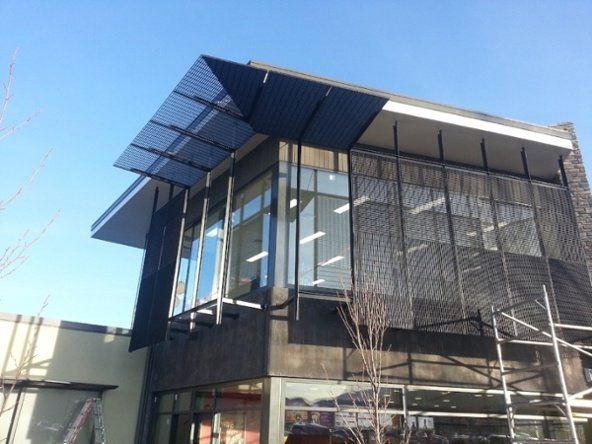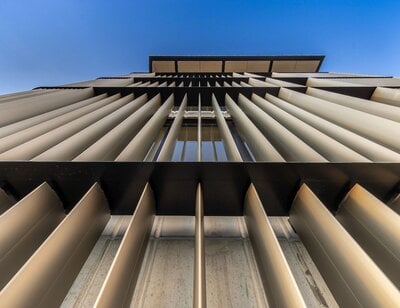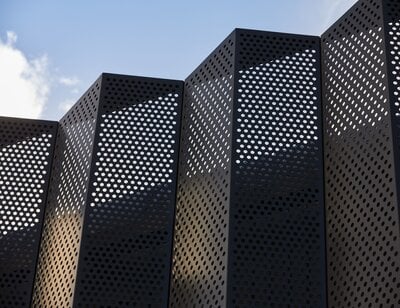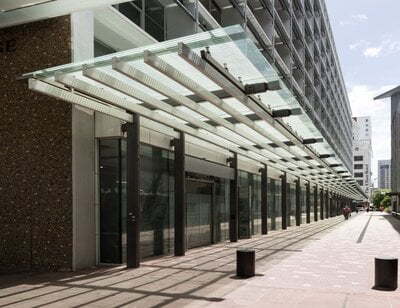 One of the common questions we get here at Insol is “what about wind noise?” And really there’s no simple answer for this, just a technical one.
One of the common questions we get here at Insol is “what about wind noise?” And really there’s no simple answer for this, just a technical one.
In this blog, we look at how most structures that are exposed to wind will make some kind of wind-noise, and what measures can be taken to minimise this.
Wondering how your architectural design will hold up in the wind? Share your plans with an Insol technician to get advice. Share your plans here.
Examples
There have been a few disastrous buildings over the years that are classic examples of not designing appropriately for potential wind noise issues. Here are a couple:
- Manchester’s Beetham tower makes ghastly shrieking noises in the wind
- Hear Auckland’s screaming buildings
Considerations when designing for minimal wind noise
Back to our question about wind noise – really the summary of the technical answer is, “nobody can accurately predict wind noise but there are some situations that are obviously higher risk than others.”
Some wind tunnel/CFD experts may dispute the above statement. We'll look forward to that and probably contract their services going forward. We have yet to find any experts who will guarantee that some complicated protrusion from a building façade will not make any noise under all varying wind conditions.
Now let’s look at why there is only a technical answer to the wind noise question. It needs to be broken down into several points as follows.
Firstly, the disclaimer
- We do not have degrees in acoustic engineering. We do however have an insatiable appetite for discovering all technical aspects relating to façade treatments and have a wealth of experience in designing, supplying, and fitting them.
- The term ‘technical answer’ may be considered misleading by an engineer who has a PhD in acoustics, however we consider it appropriate for those that ask us the question, and we have endeavored to keep it simple and maintain a plain language approach.
Orientation to the prevailing wind conditions on site and how surrounding topography affects it
Imagine you have a configuration of louvres that produce an intolerable drone when the wind is at a certain direction and speed (and of course, the offending louvre assembly is outside the master bedroom of an expensive apartment). If the entire building was rotated about its axis by about 5 degrees, or if by some stroke of luck there was a neighboring building going up next door that perfectly disrupted the airflow, the problem would cease to exist.
The reverse is also true, an installation may be fine until a neighbouring building is demolished.
Shape and construction of the louvre/sunshade/façade treatment device
Everyone knows what happens when you blow over the top of a bottle.
Don’t build a façade out of bottles (it has been done).
Aside from the ‘bottle effect’ (Helmholtz resonance if you insist on being technical) there is another phenomenon called ‘vortex shedding’ which can make a lot of noise.
Vortex shedding typically occurs in free airflows and is more likely to occur with a round object, conversely it is much less likely to occur in turbulent airflows and with an irregular object. Noise can still occur without the vortex shedding phenomenon, but vortex shedding is a very common cause. There is a wealth of information available on the internet regarding this Vortex Shedding.
Relationship to building configuration and free airflow
It is rare to find anything generating wind noise in substantially turbulent airflow. Much of the airflow close to the surface of most buildings is relatively slow and turbulent. However, pay special attention to the corners, parapets, and eaves of a building. A balustrade that is fine on a recessed balcony halfway down an elevation may turn into a tuning fork when placed on a corner balcony.
Vibro acoustic and aero acoustic
Aero acoustic noise is noise generated within the air which is caused by the way the air is interacting with an object (think whistling, rushing, roaring). Vibro acoustics is caused by an object vibrating at a natural frequency and emitting an audible noise (think musical instruments). This can be a very tone rich humming or screaming. It can also be too low or too high to be perceptible by the human ear. The most unfortunate acoustic design disasters come from wind actions causing an object to vibrate at its natural frequency.
In Summary
There needs to be an alignment of several factors for wind noise to be a problem e.g. a sharp-edged shape, with a natural frequency at audible levels, in free airflow, oriented perfectly with the prevailing wind, which are almost certain to cause a problem. However, it is rare to have all these factors align.
Solutions
So, if you’ve stuck with us this far you’ll want to know which solutions are available. We will just focus on preventative ones here. If you have an existing project that has developed a problem, our advice is to get an acoustic consultant or university involved quickly. That’s what we would do if we ever have the misfortune of landing in that situation. Fortunately our preventative measures during design phases have worked well for us to date.
The first step is a simple risk matrix
Carry out a basic risk analysis using common sense and experience.

The next step is CFD
If the risk analysis highlights any issues, then we carry out CFD modelling. While CFD is not perfect and needs skilled operators to ensure correct results, it is by far the best predictive tool available. A simple CFD model can reveal a lot of information about the wind behavior around a building and is perfect for guidance on whether the article ever experiences free airflow.



The last step is a wind tunnel
In many ways the wind tunnel is the ultimate test, and universities are very helpful and easy to work with. However, unless you have ready access to the ‘wall of wind’ most wind tunnels are too small to test anything but a scale model. This is fine for structural requirements, but for acoustic requirements it can be quite limiting. Even a wind tunnel test can leave the question unanswered.
*Update* Check out Insol's very own wind tunnel
In conclusion, there is no simple way to guarantee that a fixed structure will not create noise under all wind conditions. However, there are several common sense factors and practical steps you can take to mitigate the risk.
If you would like advice on how you can use preventative measures for your building design to minimise wind noise, talk to one of our Insol technicians. We can review your design plans and guide you with next steps for your project.









